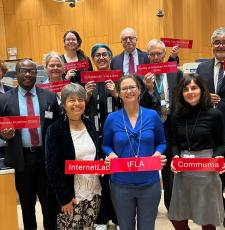Lorraine Estelle, EIFL Licensing Programme Manager, discusses the main routes for making articles open access and introduces EIFL’s guide for authors on obtaining their Author Accepted Manuscripts (AAMs) from journal publishers.
There are two main routes to making articles open access. One is by publishing open access in a journal on a publisher’s platform. The other is by depositing a version of the article in an open access repository.
The process for open access in a journal means that an article is freely available to everyone and that it is usually published under a Creative Commons licence. This licence gives other people the right to share, use, and build upon the work the author has created. However, not all authors can publish open access through this route, because many journals require the payment of an Article Processing Charge (APC). If the author cannot afford this charge, their article on a publisher’s platform will only be available to readers whose institutions have paid a subscription fee. The general public and scholars in institutions that cannot afford journal subscription fees have no access. In this case, authors can choose the other route, by making the accepted version of their article (the version accepted by a journal after the author has addressed the comments from peer reviewers) available to everyone through an open access repository.
This version is usually called the Author Accepted Manuscript (AAM). It differs from the version of the article published on the journal website (known as the Version of Record (VoR)) because it has not been copyedited or designed. So, while the AAM may not look as polished as the VoR, it has been through the peer review process and accepted, meaning that experts in the field have evaluated the academic quality of the work and checked the research methods used.
There are two challenges with the repository route to open access. The first is that authors do not always keep the AAM, because they are happy that their article has been published in a journal on a publishing platform. The second challenge is that while some journals allow authors to make their AAM available immediately in a repository, others impose a temporary stop, known as an embargo period. The length of embargos varies by journal from a few months to years. Some journals also impose conditions, such as the VoR must be acknowledged and DOI cited. Although this is complicated, a free tool, Sherpa Romeo, lists journal open access policies making it easier for authors and repository managers to check embargo periods and other restrictions.
EIFL has produced a guide for authors that explains how to obtain the AAM from the journal publisher, and how to deposit it into the repository. There is also a webinar recording (also access via also the main image on this page) with an overview of EIFL partner publishers' self-archiving policies and workflows for populating institutional repositories with AAMs.
I hope you will find our resources useful.
SHARE / PRINT








